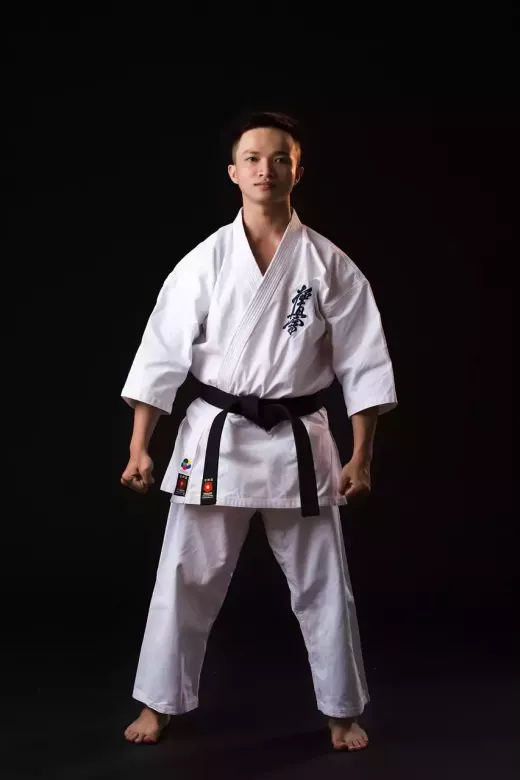Understanding the basics of Judo throws
Judo is a martial art that uses throws and grappling techniques to overcome an opponent. The goal is to use your opponent's momentum and leverage against them, rather than relying on brute strength. To accomplish this, Judo practitioners use a combination of footwork, timing, and technique to execute throws.
To start, it's important to understand the two basic elements of a Judo throw: kuzushi and tsukuri. Kuzushi is the act of unbalancing your opponent, while tsukuri is the act of positioning your body to execute the throw. Once you have achieved kuzushi and tsukuri, you can then execute the actual throw, which is known as kake.
It's also important to note that Judo throws can be classified into two categories: standing throws and sacrifice throws. Standing throws are executed while both you and your opponent are standing, while sacrifice throws involve sacrificing your own balance to take your opponent down with you.
The importance of proper Judo stance and grip
Before you can execute any Judo throw, you must first establish a proper stance and grip. Your stance should be balanced and stable, with your feet shoulder-width apart and your weight evenly distributed. Your grip should be firm but not too tight, and your hands should be positioned at your opponent's collarbone or sleeve.
There are several types of grips that you can use in Judo, including the standard grip, the lapel grip, and the sleeve grip. Each grip has its advantages and disadvantages, and it's important to experiment to find the one that works best for you.
Judo throws for beginners - Osoto Gari, Seoi Nage, and Ouchi Gari
Now that you understand the basics of Judo throws and grips, let's take a look at some essential Judo throws for beginners.
Osoto Gari
Osoto Gari, or the major outer reap, is one of the most basic and effective throws in Judo. To execute Osoto Gari, you must first establish a standard grip on your opponent's sleeve and collarbone. Next, you must unbalance your opponent by pulling them forward and to the side. Once your opponent is off-balance, you can then sweep their leg out from under them using your own leg.
Seoi Nage
Seoi Nage, or the shoulder throw, is another essential Judo throw for beginners. To execute Seoi Nage, you must first establish a lapel grip on your opponent's gi. Next, you must unbalance your opponent by pulling them forward and down. Once your opponent is off-balance, you can then lift them up and over your shoulder, using your body weight to take them down to the ground.
Ouchi Gari
Ouchi Gari, or the major inner reap, is a foot sweep that is often used in combination with other throws. To execute Ouchi Gari, you must first establish a sleeve grip on your opponent's gi. Next, you must unbalance your opponent by pulling them forward and to the side. Once your opponent is off-balance, you can sweep their leg out from under them using your own leg.
How to execute Judo throws with precision and control
Executing Judo throws requires both precision and control. To achieve these, you must first master the proper footwork and timing. You must also learn to read your opponent's movements and anticipate their reactions.
It's also important to use your body weight and momentum to your advantage. By using your hips, legs, and upper body in conjunction with your throws, you can generate more power and control.
Finally, it's important to practice your throws regularly and with a partner. This will help you refine your technique and develop muscle memory, making it easier to execute throws in real-life situations.
Judo ground techniques - pins, chokes, and arm locks
In addition to throws, Judo also involves ground techniques such as pins, chokes, and arm locks. These techniques are used to immobilize or submit your opponent once you have taken them down to the ground.
Pins involve holding your opponent down on the ground for a specified amount of time. Chokes involve applying pressure to your opponent's neck to render them unconscious. Arm locks involve applying pressure to your opponent's arm joint to force them to submit.
It's important to note that these techniques can be dangerous if not executed properly, and should only be practiced with a qualified instructor.
Importance of Judo training and practice
Like any martial art, Judo requires regular training and practice to master. In addition to developing physical strength and technique, Judo can also help you develop mental toughness, discipline, and self-confidence.
It's also important to find a qualified instructor who can guide you through the fundamentals and help you refine your technique over time. A good instructor can also help you set goals and track your progress, keeping you motivated and engaged.
Judo etiquette and culture
Judo has a rich culture and history that is deeply rooted in respect and discipline. In addition to mastering the physical techniques, Judo practitioners are also expected to adhere to a strict code of conduct and etiquette.
This includes bowing to your partner and instructor before and after each training session, showing respect for your opponents and fellow practitioners, and maintaining a clean and orderly training environment.
Common mistakes to avoid in Judo
As with any martial art, there are common mistakes that beginners often make when learning Judo. These include relying too much on strength and not enough on technique, failing to establish proper grips and stances, and not practicing throws and techniques regularly.
It's also important to avoid comparing yourself to others and focusing too much on winning or losing. Judo is a journey, and progress should be measured by your own personal growth and development, rather than external benchmarks.









